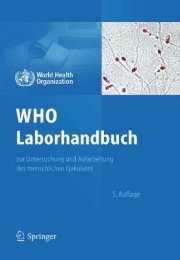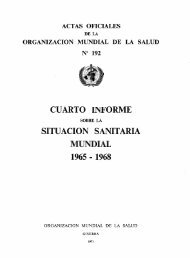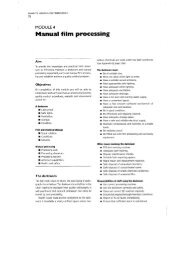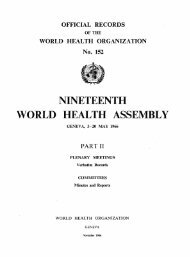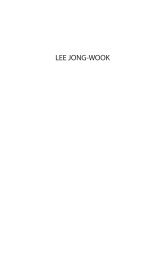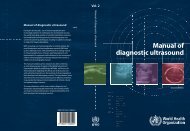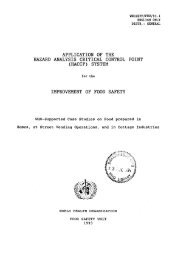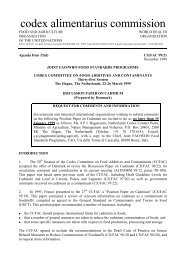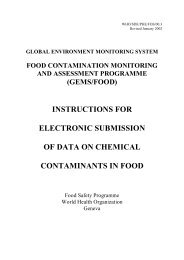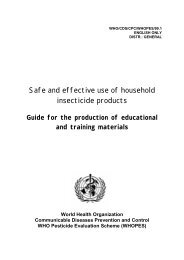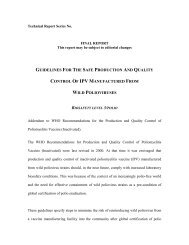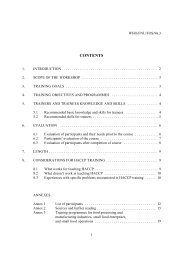WHO Drug Information Vol. 20, No. 4, 2006 - World Health ...
WHO Drug Information Vol. 20, No. 4, 2006 - World Health ...
WHO Drug Information Vol. 20, No. 4, 2006 - World Health ...
Create successful ePaper yourself
Turn your PDF publications into a flip-book with our unique Google optimized e-Paper software.
Topics of Current Interest<br />
In order to keep pace as science evolves<br />
and with a view to reduce, refine and<br />
replace animal testing, expert groups<br />
were convened during the meeting to<br />
revise the guidelines on Genotoxicity and<br />
the <strong>No</strong>n-clinical Safety Studies for the<br />
Conduct of Human Clinical Trials. The<br />
groups had very productive discussions<br />
and worked on significant revisions of the<br />
guideline requirements.<br />
Quality experts from both the chemical<br />
and biotech areas held a Quality Strategy<br />
Session to identify those areas in pharmaceutical<br />
quality which need to be<br />
addressed across all products at ICH<br />
level towards the goal of achieving<br />
harmonized submissions. Discussions will<br />
continue at the next ICH meeting.<br />
A draft guideline on Pharmacogenomics<br />
(E15) reached Step 2. This document will<br />
describe harmonized terminology for use<br />
in regulatory documentation.<br />
ICH also adopted a new topic entitled<br />
Development Safety Update Reports<br />
(E2F) which will harmonize the requirements<br />
for annual clinical trial reporting in<br />
the three regions.<br />
The Gene Therapy Discussion Group<br />
has also finalized the Document on<br />
Inadvertent Germline Transmission which<br />
presents scientific principles to address<br />
the risk of inadvertent germline integration<br />
during development of a gene<br />
therapy product. The group also made<br />
progress on two new Considerations<br />
Documents on Vector/Viral Shedding and<br />
Oncolytic Viruses.<br />
The next ICH Steering Committee Meeting<br />
will be held in Brussels, Belgium, from<br />
7–10 May <strong>20</strong>07.<br />
Reference: ICH Steering Committee Meeting.<br />
Press Release. Leveraging ICH Efforts to<br />
Increase Globalization. http://www.ich.org<br />
268<br />
<strong>WHO</strong> <strong>Drug</strong> <strong>Information</strong> <strong>Vol</strong> <strong>20</strong>, <strong>No</strong>. 4, <strong>20</strong>06<br />
Anticounterfeiting Taskforce<br />
develops strategy<br />
The <strong>World</strong> <strong>Health</strong> Organization (<strong>WHO</strong>)<br />
and its partners have officially launched<br />
the International Medical Products Anticounterfeiting<br />
Taskforce (IMPACT) at a<br />
meeting in Germany on 15 <strong>No</strong>vember<br />
<strong>20</strong>06. IMPACT is made up of <strong>WHO</strong><br />
Member States and more than <strong>20</strong> other<br />
major stakeholders, including Interpol, the<br />
<strong>World</strong> Customs Organization, patient and<br />
health professional organizations, and<br />
associations representing pharmaceutical<br />
manufacturers and wholesalers.<br />
Counterfeiters and their allies engage in<br />
elaborate conspiracies to disguise activities.<br />
They establish fictitious businesses<br />
and front companies; exploit weaknesses<br />
in border control; use false documents to<br />
obtain pharmaceutical ingredients and<br />
manufacturing equipment to replicate<br />
genuine products. In sum, their actions<br />
are meant to disguise the extent of the<br />
crime and this makes detection and<br />
reporting extremely difficult.<br />
Following the launch, IMPACT has<br />
proposed a global plan to combat counterfeit<br />
medical products. As a first step, it<br />
has released a preliminary report on<br />
estimates of the number of counterfeit<br />
products thought to be circulating on<br />
world markets.<br />
Until now, the number of counterfeit<br />
medicines has generally been estimated<br />
at approximately 10% of the global<br />
medicines market. As the capacity to<br />
collect and analyse information improves,<br />
a better understanding of the situation is<br />
possible. A rapid overview of the situation<br />
shows that counterfeiting is greatest in<br />
those regions where regulatory and legal<br />
oversight is weakest.<br />
Most developed countries with effective<br />
regulatory systems and market control



